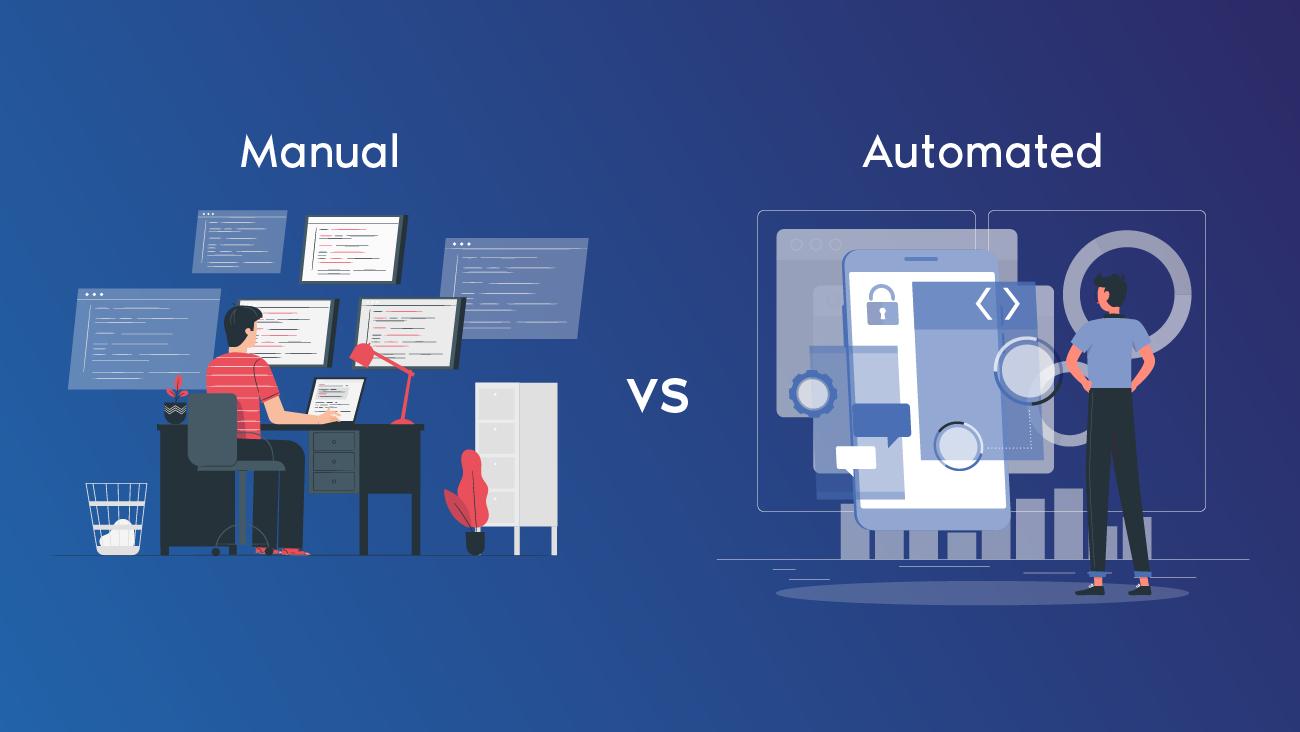In this debate on Automated Vs Manual testing, we will be sharing an idea of what both of these are. Their pros and cons, and also the differences in approach of both.
most quality assurance engineers work on either manual testing or automated testing throughout their careers. People hardly make the switch to the other side unless they are required to do so by their organization. This is a thing that should actually be encouraged by organizations; as it directly improves employee skillset and work-related satisfaction too in the long run.
Manual testing
As the name suggests ‘manual testing’ requires some manual work. This means a person who is actually testing stuff and making a list of tests to run. After each builds or deploy this person looks at their list of manual tests and checks them off one by one. The reason for doing all the tests after each new deployment or version of the software is that; any existing feature could easily have been affected by new changes. Hence, it is important to check whether previously built things are still running as expected or not.
Manual testing has its perks and flaws. One of the main perks is that an actual person is designated for this job. This person is solely responsible for overlooking all the related test cases and flows. One of the main flaws can be seen here as well. As this is a human part too much involved in the overall testing. And because of the human part, there can be human errors as well which should be kept in mind.
Automated testing
Automated testing on the other hand is as the name suggests automated. meaning no or very little human involvement. Basically, the idea is that humans write some test scripts that auto-run upon each new release/deployment. Hence all the old development has its own test cases running and being checked along with any new deployment. So the human part involvement is limited to that. Writing new test cases for new things that are being developed and keeping a record of the previous tests. Also, running them automatically for each new release.
By carrying out this process, the previous things are always checked. And the probability of new changes breaking older things is greatly minimized. Automation is always nice to have, having it in software development and testing makes the whole software development life cycle just that much more quicker and reliable. Automated testing is undoubtedly taking over the software industry.
Automated Vs Manual Testing

Future of testing
The future of testing is without a second opinion ‘automated testing’. The current stage of testing that we have globally can be termed or hybrid testing. Hybrid here means some part automated and some part manual. Here a manual QA engineer is working hand in hand with automated processes and in some scenarios, the human overtakes these processes and does some of the manual testings as well.
Manual testing as of now and for the coming years is not going anywhere. Hence we could expect some level of advanced hybrid testing in which the human effort of writing test cases would be even more minimal. And the testing process itself would be smarter, expecting what to test, what new changes are, and suggesting possible ways to test it. Here the possible ways can be unit testing, end to end testing, regression testing, etc. Also, the current pipelines that are designed by QA or DevOps engineers for automation; could theoretically also be created by a click of a button. This is what most experienced QA and DevOps engineers predict and hope for in the future of testing.

